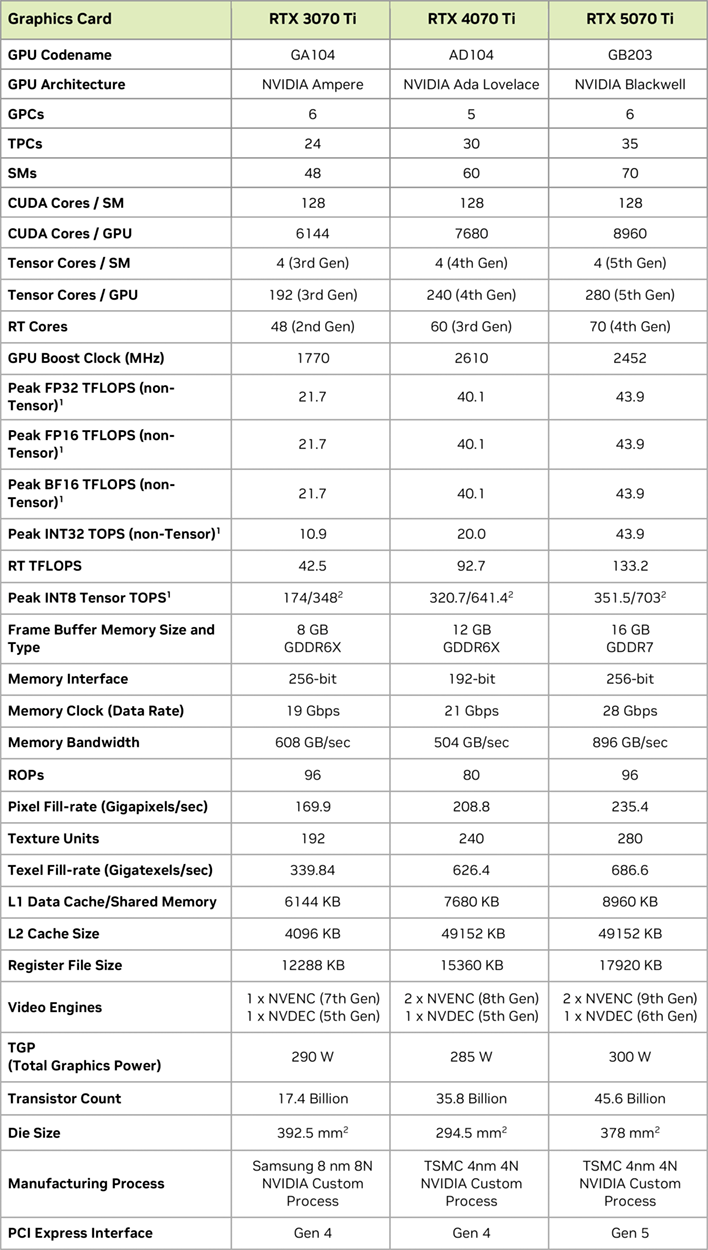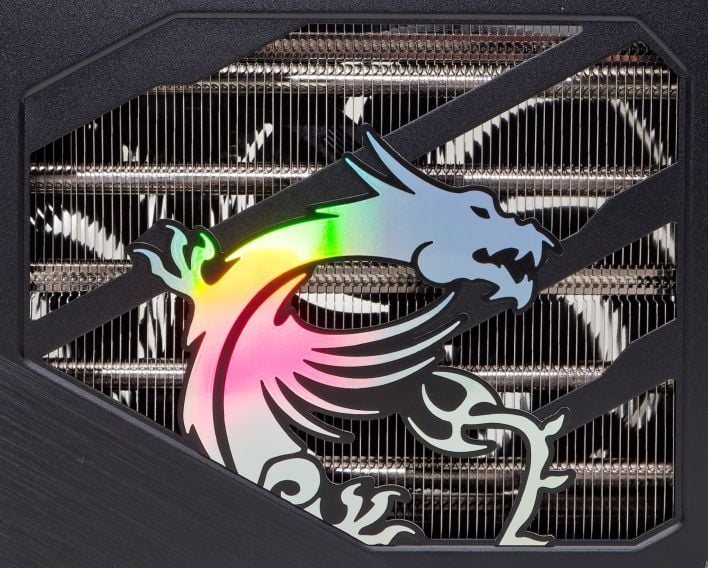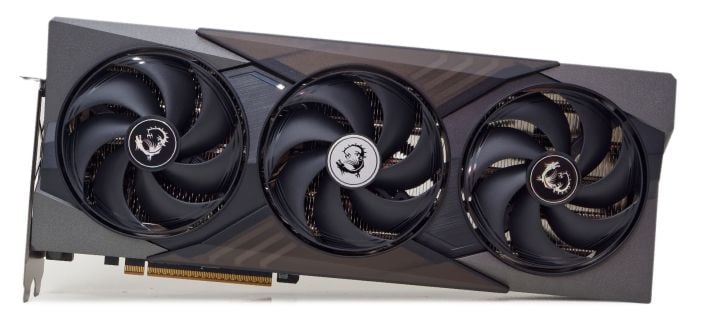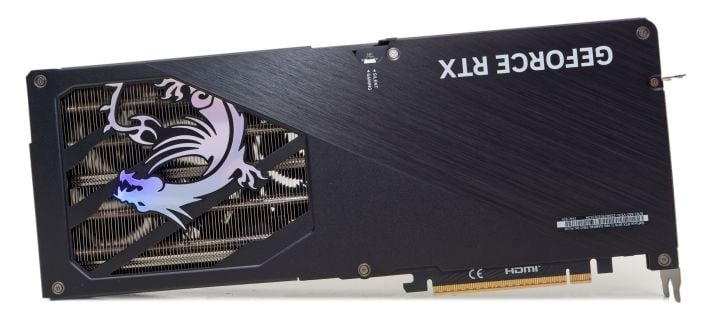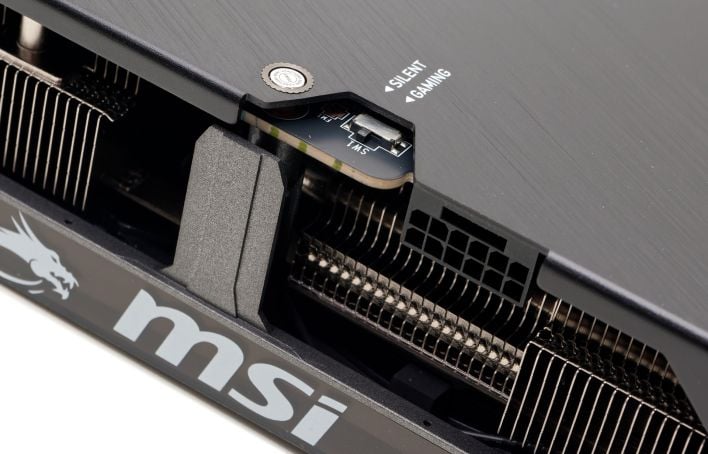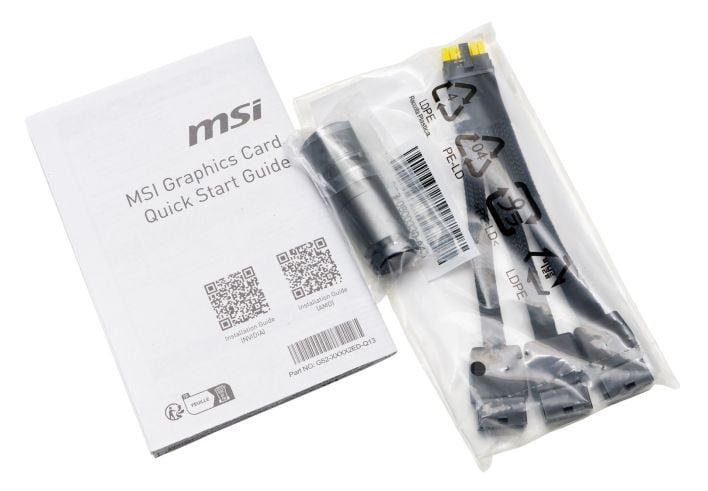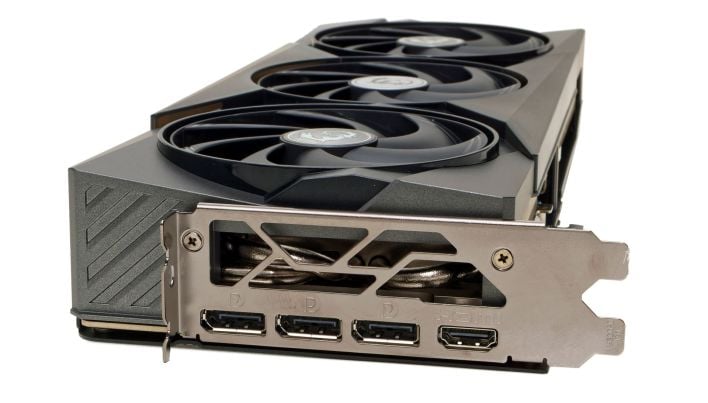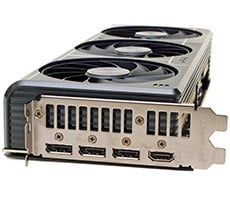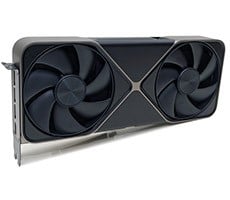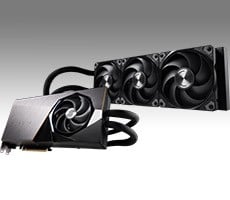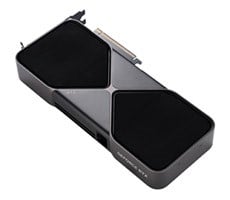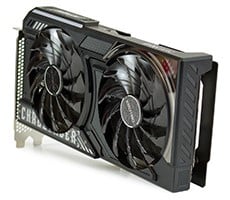MSI GeForce RTX 5070 Ti Gaming Trio Review: Hot-Clocked Blackwell GB203
| MSI GeForce RTX 5070 Ti Gaming Trio Review: MSRP $799 The MSI GeForce RTX 5070 Ti Gaming Trio takes NVIDIA's GB203 GPU and gooses up its clock speeds to improve performance over standard cards.
|
|||

|

 |
||
Yesterday, NVIDIA launched the GeForce RTX 5070 Ti, at least as it relates to cards that should be priced at MSRP. We evaluated an ASUS Prime GeForce RTX 5070 Ti and found it to be a cool, quiet, good performing and easily overclockable graphics card, but one that’s only marginally faster than its immediate predecessor with traditional rasterization. Factor in DLSS 4 with multi-frame generation, however, and effective framerates far exceed much more powerful cards. We’ll show you exactly what that looks like a little later.
For now, we’ve got another GeForce RTX 5070 Ti to show you, that's a bit bigger and burlier, the MSI GeForce RTX 5070 Ti Gaming Trio. This MSI card is one of five RTX 5070 Tis the company has coming down the pipeline, and the second highest clocked model behind only the top-end Vanguard SOC. Let’s dive right in and take a look...
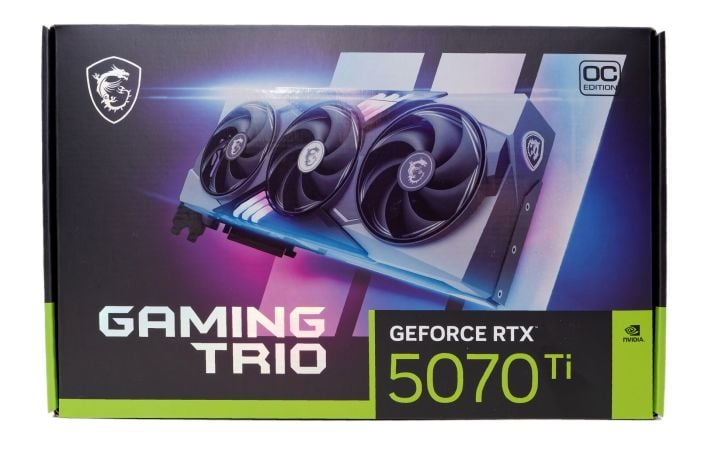
NVIDIA GeForce RTX 5070 Ti Specifications
The above table compares the main features and specification of the last three "70" class GPUs from NVIDIA. In terms of its speeds and feeds, the GeForce RTX 5070 Ti is an upgrade over the previous-gen GeForce RTX 4070 Ti in most ways. The GeForce RTX 5070 Ti has more cores, which are also based on a newer architecture, more memory with much higher bandwidth, more L1 cache, a larger register file, an upgraded media engine, a native PCIe Gen 5 interface, and higher pixel and texture fill rates, despite a somewhat lower boost clock. Like the older RTX 3070 Ti, a 256-bit memory interface returns, which results in nearly 900GB/s of peak bandwidth, when paired to its speedy 16GB of 28Gbps GDDR7 memory.
The new RTX 5070 Ti is built around the 45.6 billion transistor GB203 GPU, which also powers the RTX 5080. But unlike the GeForce RTX 5080, which features a fully-enabled chip, the RTX 5070 Ti is scaled back somewhat. The full GB203 features 11 GPCs, 42 TPCs, 84 SMs, and eight 32-bit memory controllers, for an aggregate 256-bit bus width. Each SM contains 128 FP32 CUDA Cores, for a grand total of 10,752, with 84 4th Gen RT Cores, 336 5th Gen Tensor Cores, 336 Texture Units, and 112 ROPS. The GB203 also includes a total of 10,752 KB L1 cache, a 21,504 KB Register File, and 65,536 KB L2 cache. On the GeForce RTX 5070 Ti, however, only 6 GPCs, 35 TPCs, and 70 SMs are enabled, which results in 8,960 total CUDA cores, 280 Tensor cores, and 70 RT cores. The L1 cache also drops down to 8,960KB, with 49,152KB of L2.
The GB203 powering the GeForce RTX 5070 Ti is scaled back versus more powerful cards in the RTX 50 series, but its features and capabilities remain the same. RTX Neural Rendering, RTX Mega Geometry, DLSS 4 with Multi-Frame Gen, the new AI Management Processor, and updated media engine with hardware acceleration for 4:2:2 video are all part of the GeForce RTX 5070 Ti's feature set. You can learn about all of those features in our previous NVIDIA Blackwell GPU architecture coverage, if you haven't already read it.
Check Out The MSI GeForce RTX 5070 Ti Gaming Trio
Like the ASUS card we looked at yesterday, MSI GeForce RTX 5070 Ti Gaming Trio is a relatively chonky graphics card. Though NVIDIA was able to shrink its flagship GeForce RTX 5090 and the RTX 5080 Founders Edition cards down into a two-slot form factor, partners like MSI are using larger designs on their RTX 50 series cards. The MSI GeForce RTX 5070 Ti Gaming Trio, for example, is 2.7 slots wide and quite long. Its precise measurements are 13.3 x 5.5 x 2 in (338 x 140 x 50 mm) and it weighs in at almost 2.9lbs (1.3kg).The dominant feature on the MSI GeForce RTX 5070 Ti Gaming Trio – as the Trio suggests – is its large, triple-fan cooler. The card features a massive thin-fin heatsink array, with multiple heat-pipes and a nickel-plated copper baseplate. The baseplate makes direct contact with the GPU and memory, and the heat-pipes are what MSI calls “core pipes”; that basically means the pipes are squared off to maximize contact with the baseplate. The heatsink fins themselves are also formed into curved ‘V’ shapes in a few sections to optimize air flow through the fins and minimize turbulence, and hence, lower noise output. The fans feature dual ball bearings for increased longevity, along with 7, textured fan blades – again, to maximize air flow and help minimize noise. It's also a partial pass-through design, with a section at the back that extends well past the actual PCB -- you can see it behind the dragon above. Whether or not all of the tweaks and customization to the heatsinks and fans are actual improvements over simpler designs it difficult to determine, but in the real world, the cooler on this MSI card definitely does its job well. We’ll get into more detail in the overclocking section a little later.
Over and above the baseplate that’s affixed to the GPU and memory, multiple thermal pads are used as well to ensure additional heat dissipation for other critical components on the card that make contact with other portions of the heatsink. A metal backplate on the card also features thermal pads underneath to aid in cooling.
The MSI GeForce RTX 5070 Ti Gaming Trio features a dual bios switch, with silent and gaming modes, but it only tweaks the fan curve on the card. With the switch in either position, the default GPU boost clock is 2,572MHz, but the fan speed will ramp up to 1,230 RPM in silent mode or 1,300 RPM in gaming mode, once the GPU temp creeps into the low 60°C range. Needless to say, that minor increase in fan speed has only a minimal impact on noise levels. MSI’s data shows a less than 2dBa difference between the two modes, which most people won't be able to discern over noise coming from other fans in a system. We tested the card in performance mode throughout.
Included with the MSI GeForce RTX 5070 Ti Gaming Trio is a basic lit pack, an adjustable GPU support stand, and a power adapter that turns three 8-pin PCIe power feeds into a single 12VHPWR connector. MSI does something useful with its adapter that should be commended, too. The insertion points are a bright yellow, so it’s much easier to see if the connector isn’t fully seated into the GPU.
Outputs on the MSI GeForce RTX 5070 Ti Gaming Trio mirror other GeForce RTX 50 series cards and include three DisplayPorts (2.1b) and a single HDMI port (2.1b). Those ports are nestled into a stainless steel backplate that features venting, to allow some warm air to escape a system. Some of the heat pipes that snake though the heatsink are visible just behind those vents.
And now that you're intimately familiar with the card, let's get to the benchmarks...

